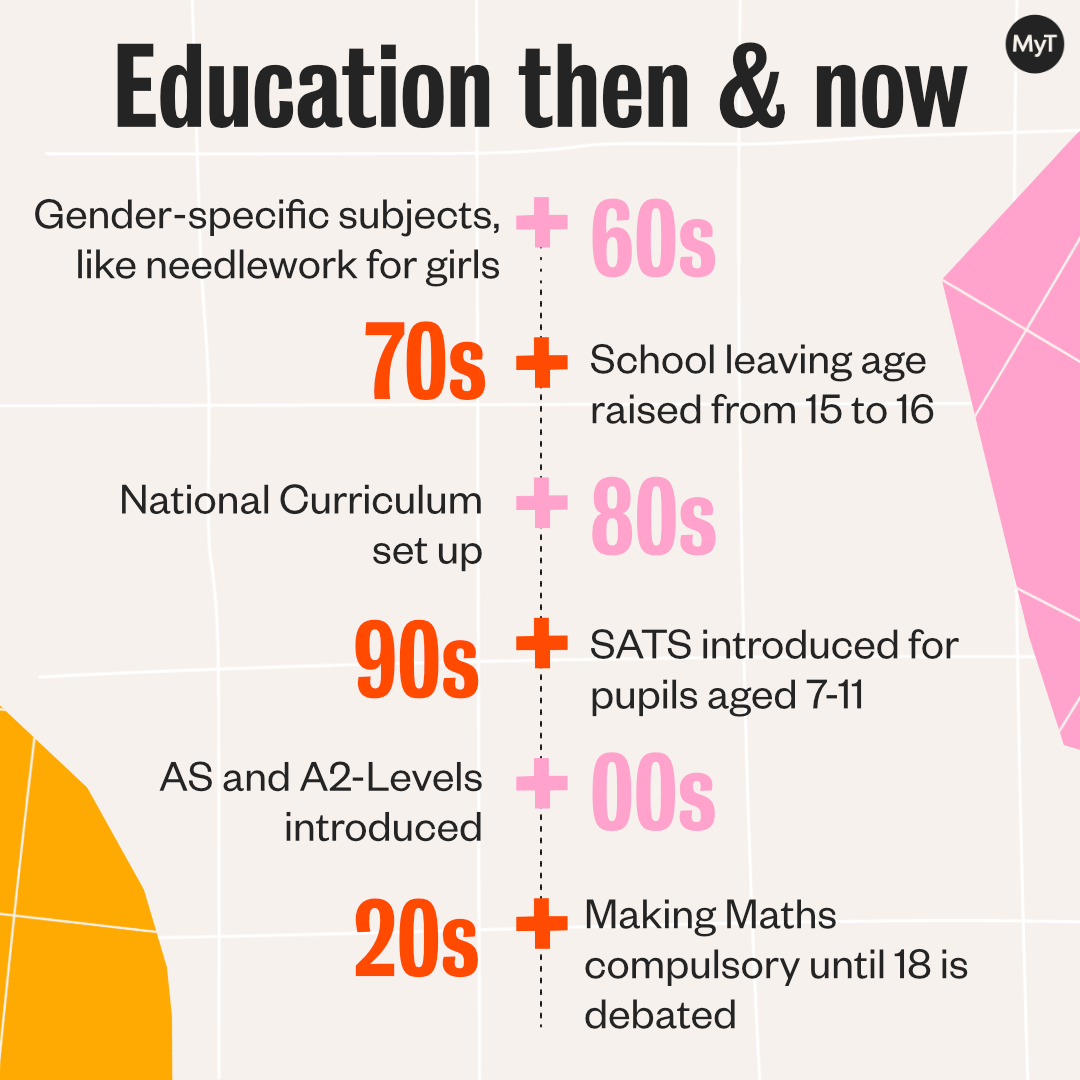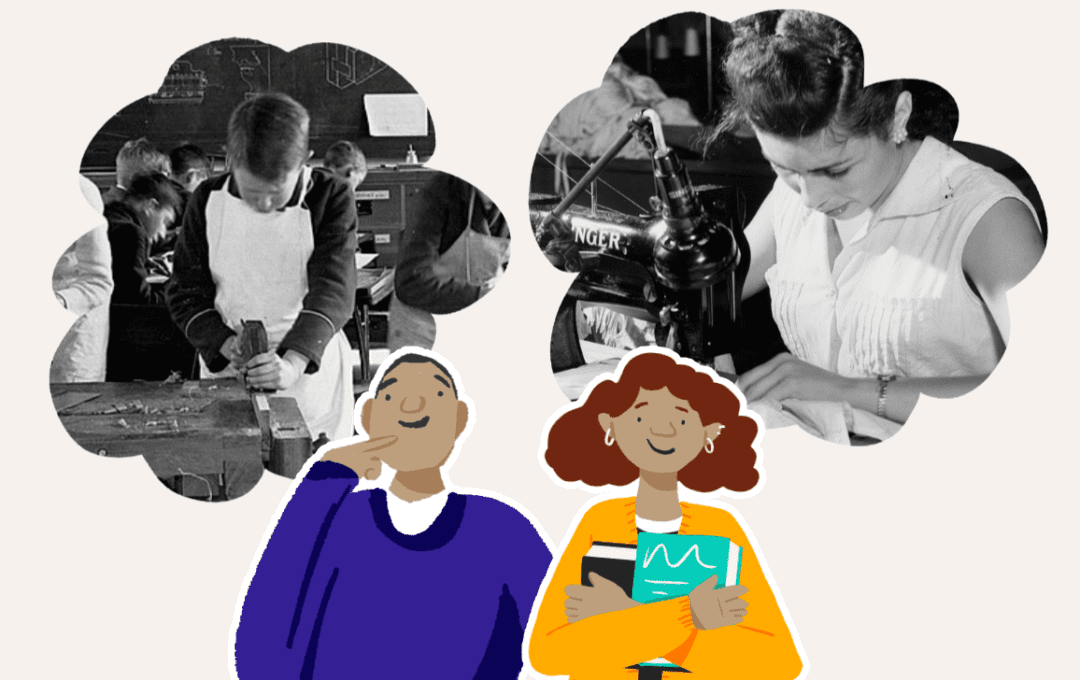From the Silent Generation to Baby Boomers, Millennials to Gen Z, the only way we tend to talk about generations is by comparing them. But this week is Global Intergenerational Week and it’s all about celebrating the power of generations coming together and learning from each other.
We’ve all gone through the school system and probably had very different experiences. Some of us have lived through big changes and the National Curriculum has evolved over time.
So, how has school changed over the years? Here, we take a deep dive into how schools and education have evolved. How many of these changes do you remember?


The 1960s: gender-specific subjects and the comprehensive school
- In the 60s, some subjects were still gender-specific – with girls taking cookery, needlework and typing, and boys doing woodwork and metalwork.
- Fewer than 1 in 10 women went to university and most studied the arts and humanities.
- Up until this time, there was also a selective school system, where you were let into certain schools based on your academic performance. In 1965, the comprehensive school was introduced, enabling children aged 11-18 to go without being tested academically.
The 1970s: leaving school at 16 and the end of free milk
- The 1970s spelled the end of free school milk for children over seven. Up until this time, as part of Post-War Britain, children were given a third of a pint each day.
- 1972’s Education Act raised the school leaving age from 15 to 16. It was also the year that the Education Work Experience Act was created, which allowed students to use their final year for work experience.
- Sex education was beginning to change around this time too – biology textbooks began to share more detailed information about reproduction and relationships were discussed more in personal and social education.


The 1980s: the National Curriculum is set up
- In 1986, O-Levels changed to General Certificate of Secondary Education (GCSEs) – it was the biggest exam shake-up in decades. 29 exam boards were reduced down to five key groups to make things simpler.
- Later in 1988, the National Curriculum was set up in England and Wales (1992 in Northern Ireland). It was the first compulsory curriculum for all state schools. The whole idea was to put every school on a level playing field and help every pupil get the same standard of education – with a big emphasis on the core subjects, English, Maths and Science.
The 1990s: Key Stages and SATS are introduced
- Key Stages and the Standard Assessment Tests (SATs) were introduced gradually between 1991-98. Key Stages 1-3 were introduced and worked as attainment targets for pupils and teachers to reach.
- At the time, the SATs were pretty controversial and are still debated today.
The 2000s: AS and A2-Levels are introduced and GCSE grading changed to numbers
- A-levels became split into AS and A2-Levels in 2000. The idea was to spread learning across two years so pupils could deepen their knowledge. Psychology, Photography and Economics were all on the rise as popular subjects.
- In 2015, the school leaving age was raised to 18, but this wasn’t limited to staying at school. After 16, teens could choose different education paths like college or start a workplace apprenticeship.
- Ahead of the 2017 GCSEs, the government changed the GCSE grading system from A*-U to a numerical system where 9 is the top grade and 1 is the lowest. This was to bring in more differentiation at the top end of the grading scale, to better identify very high-performing students.


The 2020s: Private tuition grows and Maths might become compulsory
- The pandemic and school closures caused a sharp rise digital learning and private tuition. In 2023 it’s been reported that 30% of secondary school teens now have a private tutor, with more charities and companies working to make tutoring and extra support more accessible.
- Then, there’s the current debate led by PM Rishi Sunak around making studying Maths is compulsory until the age of 18. But, the jury’s still out here.
So, there you have it – a brief history of schools and education since the 1960s. Despite all the changes and generational differences, making sure that learning and education is as accessible, inclusive and supportive as possible seems to be the winning mission.




